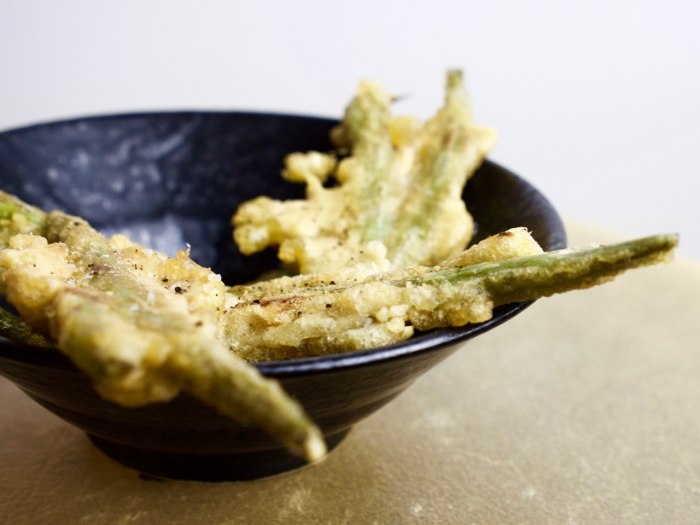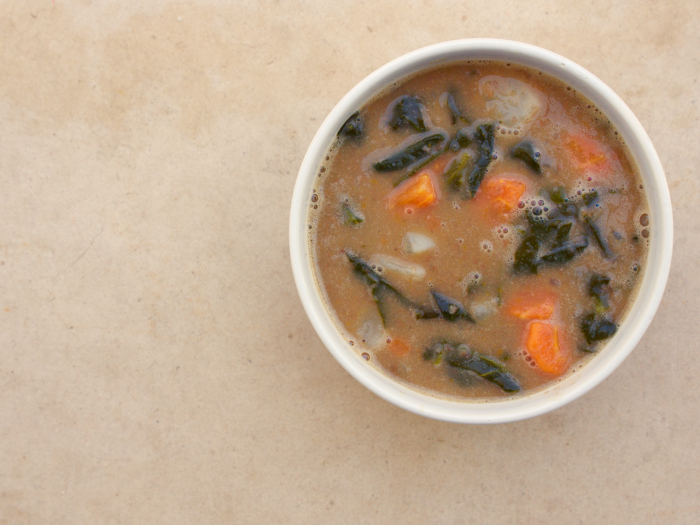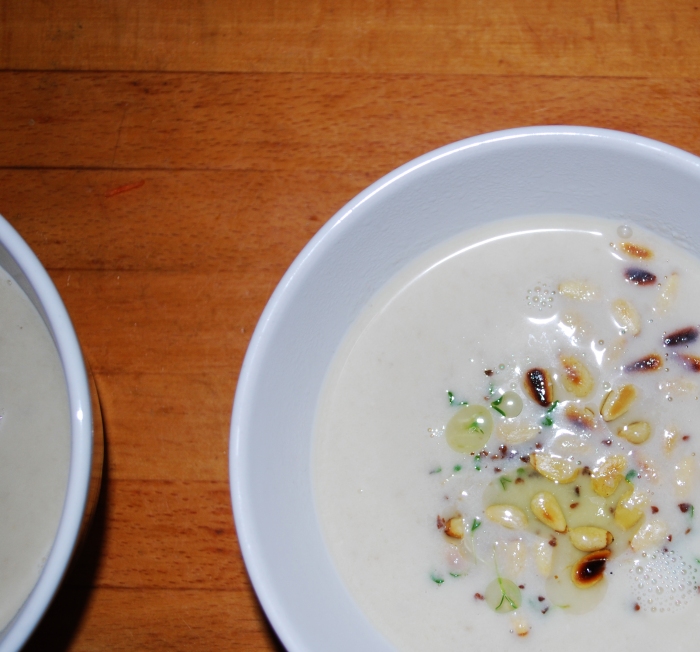
Soups are the essence of family meals. Seasonal, sustainable, using what’s around, celebrating what the land brings. Like in many cultures, soups in Portugal are a reliable source of nourishment, somtimes generic but often highly specific, always depended on region and season. You might wander into a restaurant and be greeted with the soup of the day, usually a soup base made of blended seasonal vegetables with garlic, onion, seasonal fresh vegetables and finished with olive oil. This recipe is concerned with a rather special mix consisting a a flavourful blend of autumn pumpkin, onion, garlic as the base. We add fresh spinach towards the end for colour, taste and texture, all with a good dose of good olive oil. The soup base should have a creamy texture and beautiful orange colour. Pumpkins vary immensely in taste and consistency. A small green skin and orange firm flesh pumpkin is ideal.
Ingredients
8 cups of chopped pumpkin (peeled, seeded and chopped roughly)
8 cups of chopped spinach
1 onion (sliced)
4 cloves of garlic
4 tbsp of olive oil
Salt and (white and black) pepper
1.8L Water
Serves 6 to 8
- Cook the onion in 2 tbsp of olive oil for a couple of minutes at medium heat stirring throughout, add the garlic and cook for another minute or two until you can smell fragrance coming through.
- Add 1.8L of water, salt and pepper. Bring to boil and add the pumpkin. Cook for 30 minutes, siring occasionally, then blend.
- Bring to boil and add the chopped spinach. Cook for 2 – 4 minutes depending on the spinach. Keep it green and with a bit of texture.
- Add 2 tbsp of extra virgin olive oil correct seasoning and stir for another couple of minutes.
- Serve hot with a drizzle of good olive oil.



